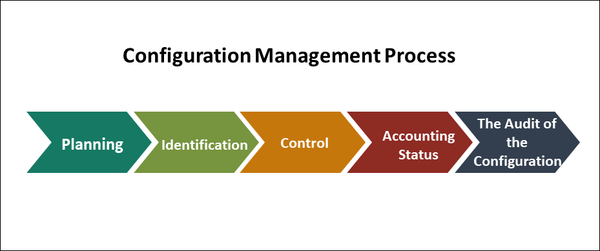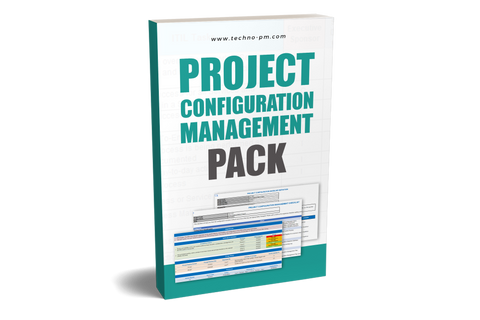Why Every Project Needs A Configuration Management Plan?
Configuration Management Plan
If your business utilizes a systems engineering process known as configuration management to maintain the consistency of a project regarding performance and physical attributes throughout the production process (and often for the projected lifetime of the product), then your business also needs a configuration management plan for that project.
 Configuration Management Plan
Configuration Management PlanWhat Is A Configuration Management Plan?
A configuration management plan (CMP or CM Plan) is a document that describes in detail how configuration management (CM) will be recorded, tracked, controlled, and then audited to ensure all quality standards and necessary requirements are met for a product or program. As a key component of project management, configuration management ensures the quality of the product delivered to the customer.
Without a CM Plan in place, your configuration management tools are missing a critical element.
A CM Plan ensures that the implementation of configuration management adequately meets safety standards and QA measures across departments and through all production stages. Without this CM plan detailed out, even checks like change controls or configuration audits in PDM software can leave gaps and overlook issues that may lead to problems later on.
A configuration management plan always contains certain details regardless of the industry or product being applied. Though the specifics and figures may vary, the elements are the same.
Configuration Management System
The configuration management system will help manage the versioning of the project, documents, and project components. This can include any end products that will be delivered to the customer. It also provides management products with things like the project management plan and the performance management baseline.
There are five steps in the configuration management process -
- Planning Step
- Identification Step
- Control Step
- Accounting Status Step
- The Audit of the Configuration

What Details Are Included In The CMP?
The configuration management plan explains from start to finish how a process will be implemented initially and how it will be maintained over time, detailing the procedures and responsibilities of each department as the project passes through their hands. Often bridging the gaps between multiple departments, this brings a project's scope into perspective with all the areas where inconsistencies could have potentially arisen between the distinct teams. With a decisive document detailing each individual's role and each step in the process, the possibility of miscommunication related errors is greatly reduced.
A complete CM Plan will include:
- Explicit instruction as to the level of Configuration Identification (CI) that will occur
- Define minor, major, and critical Change Control Classifications
- Designate the structure, members, and approval authority of the Change Control Board (CCB)
- Explain the processes for change proposals, requests, and notices
- Describe how deviations, variances, and waivers will be handled
- Address Configuration Status Accounting activities
- Explain the Verification and Audit of CIs
While the specific details of this metadata will be unique to your field and your process, the overarching ideas listed above apply across industries. This is why a configuration management plan template is so helpful. Providing you with the necessary framework and ensuring that no detail, large or small, is overlooked, starting your CM Plan with a quality template will ensure that none of these factors are overlooked right from the start.
So, Why Does Every Project Need a CMP?
In a worst-case scenario, aside from natural disasters or human error, any engineering disaster ultimately leads back to an issue with configuration management. So, in the event of a disaster or major problem, the first item that investigators or auditors will turn to for answers will be the configuration management plan. They will look for contributing factors to the malfunction or problem and for potential insufficiencies in the plan. Without a CMP for your product or process, it would quickly become apparent that the error was in the lack of planning itself. Although your final product may not be a building or bridge that could put hundreds of lives at risk if it were to fail—no matter what the stakes of failure are for your product—a colossal failure in configuration management is a high stakes risk for the success of your business.
Worst-case scenarios aside, there is a myriad of reasons that implementing a configuration management plan will save time and money for your business and provide you the opportunity to deliver a product of the highest quality.
Remember that a configuration management plan is vital to delivering the best possible product to your client. With a detailed process from start to finish and documentation of changes and variables along the way, you will quickly uncover and resolve errors to ensure the highest possible quality margins. As an integral part of your overall project management plan, your CM Plan ensures satisfied customers and the highest quality results.
With the proper implementation of a configuration management plan, time wasted on unacceptable change control classifications will be reduced by providing you the opportunity to identify them immediately. With the ability to review metadata quickly for these kinds of issues, your business will have the best possible time frame to resolve them quickly and protect your profit margins.
An effective configuration management plan continues to evolve over time to adapt to the process as it becomes more refined. As you learn from mistakes and make corrections to your process, not only will you streamline your process, you will ensure that your process of trial and error is minimized as well. With a paper trail of proper documentation along the way, a detailed CM Plan means that past problems in your process will remain resolved, and previous inefficiencies will not be repeated.
Why Would A Company Not Implement a CM Plan?
With the clear advantages of creating a detailed configuration management plan for an engineering project of any kind, it seems obvious that any business utilizing configuration management should complement their process with a CM Plan.
The primary reason for not implementing a CM Plan is the assumption that the CM software's use means that a CM Plan is also in place. However, this is not always the case.
Oftentimes, a team of many individuals will be required to help put together a cohesive CM Plan for a project. There are tools and templates available to assist in the process, but creating the plan itself is a manual process. The software is a helpful tool, but it does not replace the human element required to create a CM Plan.
Techno-PM offers a variety of high-level project management templates, Kits, and packages that can help you seamlessly manage projects, submit competitive bids to prospective clients, and have a good image to stakeholders, clients, and senior managers, and team members. Deliver faster and save more time with our templates designed by expert project managers.




Leave a comment